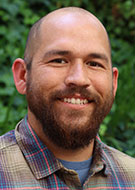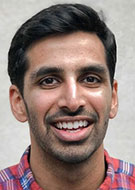Radiology in public focus
Press releases were sent to the medical news media for the following articles appearing in recent issues of RSNA Journals.

Deep Learning Model Accurately Diagnoses COPD
Using just one inhalation lung CT scan, a deep learning model can accurately diagnose and stage chronic obstructive pulmonary disease (COPD), according to a study published in Radiology: Cardiothoracic Imaging.
Study author Kyle A. Hasenstab, PhD, assistant professor of Statistics and Data Science at San Diego State University in California, and colleagues sought to test their hypothesis that a single inhalation CT acquisition combined with a convolutional neural network (CNN) and clinical data would be sufficient for COPD diagnosis and staging.
The model performed similarly to COPD diagnoses that used combined inhalation and exhalation CT measurements.
“Reduction to a single inspiratory CT acquisition can increase accessibility to this diagnostic approach while reducing patient cost, discomfort and exposure to ionizing radiation,” Dr. Hasenstab said.
Read the related RSNA News story.

Deep Learning Model Helps Detect Lung Tumors on CT
A new deep learning model shows promise in detecting and segmenting lung tumors, according to a study published in Radiology.
Lead author, Mehr Kashyap, MD, resident physician in the Department of Medicine at Stanford University School of Medicine in California, and colleagues trained an ensemble 3D U-Net deep learning model for lung tumor detection and segmentation using 1,504 CT scans with 1,828 segmented lung tumors. They tested the model on 150 CT scans. It achieved 92% sensitivity and 82% specificity in detecting lung tumors on the test set.
“Our study represents an important step toward automating lung tumor identification and segmentation,” Dr. Kashyap said. “This approach could have wide-ranging implications, including its incorporation in automated treatment planning, tumor burden quantification, treatment response assessment and other radiomic applications.”
Read the related RSNA News story.

A Simple Way to Help Your Patients Now
Looking to help your patients better understand their radiology reports? Send them to RadiologyInfo.org, the public information website produced by RSNA and ACR, for the latest in our patient-friendly series of articles and videos covering:
- How to Read Your Abdominal and Pelvic CT Report
- How to Read Your Mammography Report
- How to Read Your Chest X-ray Report
- How to Read Your Brain MRI Report
- How to Read Your Head CT Report
Follow RadiologyInfo.org on social media at Facebook (facebook.com/RadiologyInfo), Instagram (@radinfo4patients), X (@radiology-info_) and Bluesky (@radiologyinfo.bsky.social).

Expanding Your Reach Through Media
RSNA promotes research from our journals and other Society news, tracking placement and impressions over time to determine news reach. In December, we tracked 19,347 RSNA-related news stories that resulted in over 27.3 billion audience impressions.
As we continue to amplify newly published research in 2025, we are also keeping an eye on the ongoing placements and audience impressions related to RSNA 2024. Thus far, there have been 29,111 tracked placements, with more than 36 billion estimated audience impressions. Prominent outlets covering news from RSNA 2024 include an international array of print, broadcast and digital media, as well as renowned regional outlets in top-tier markets.
Seven RSNA 2024 press releases were issued during the annual meeting.
- Hidden Fat Predicts Alzheimer’s 20 Years Ahead of Symptoms
Researchers linked a specific type of body fat to the abnormal proteins in the brain that are hallmarks of Alzheimer’s disease up to 20 years before the earliest symptoms of dementia appear.
- Countertop Workers Exposed to Serious Lung Disease
Engineered stone countertop workers may develop atypical and advanced features of silicosis that can be missed by doctors, leading to delays in diagnosis amid a resurgence of the disease.
- Muscle Loss Could Increase Dementia Risk
Researchers found that skeletal muscle loss may increase the risk of developing Alzheimer’s disease dementia.
- Minimally Invasive Procedure Relieves Knee Arthritis
Genicular artery embolization provides significant relief from knee pain and may prevent the need for knee replacement surgery in people with osteoarthritis, researchers found.
- Eating High-Processed Foods Impacts Muscle Quality
A diet high in ultra-processed foods is associated with higher amounts of fat stored inside thigh muscles, regardless of the amount of calories consumed or level of physical activity.
- Study Exposes High Injury Rates in Transgender Women
Researchers found that injury rates among transgender women are significantly higher than injuries among cisgender women, based on radiological imaging.
- Women Pay for AI to Boost Mammogram Findings
More than a third of women across 10 health care practices chose to enroll in a self-pay, AI-enhanced breast cancer screening program. Those enrolled were 21% more likely to have cancer detected.